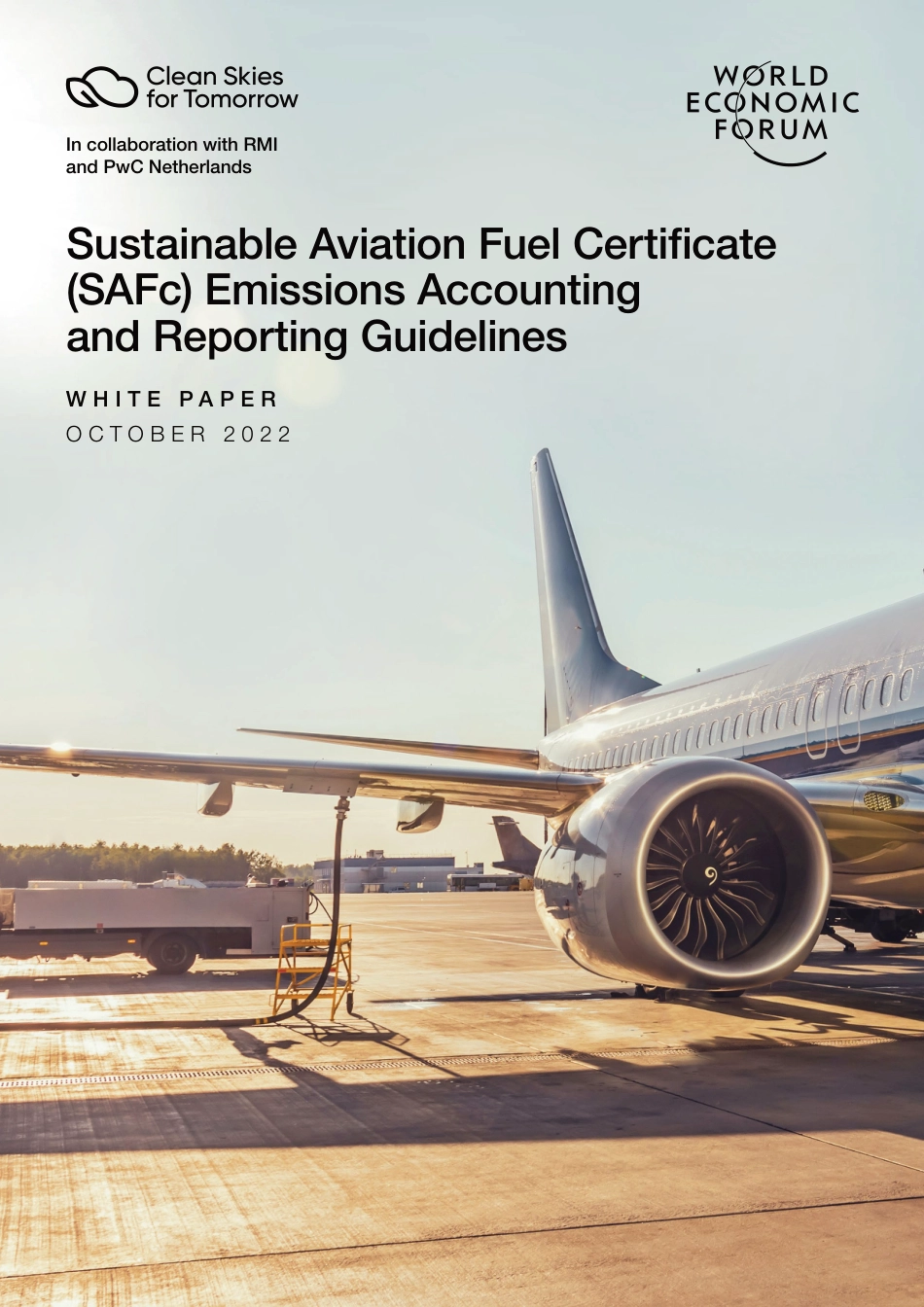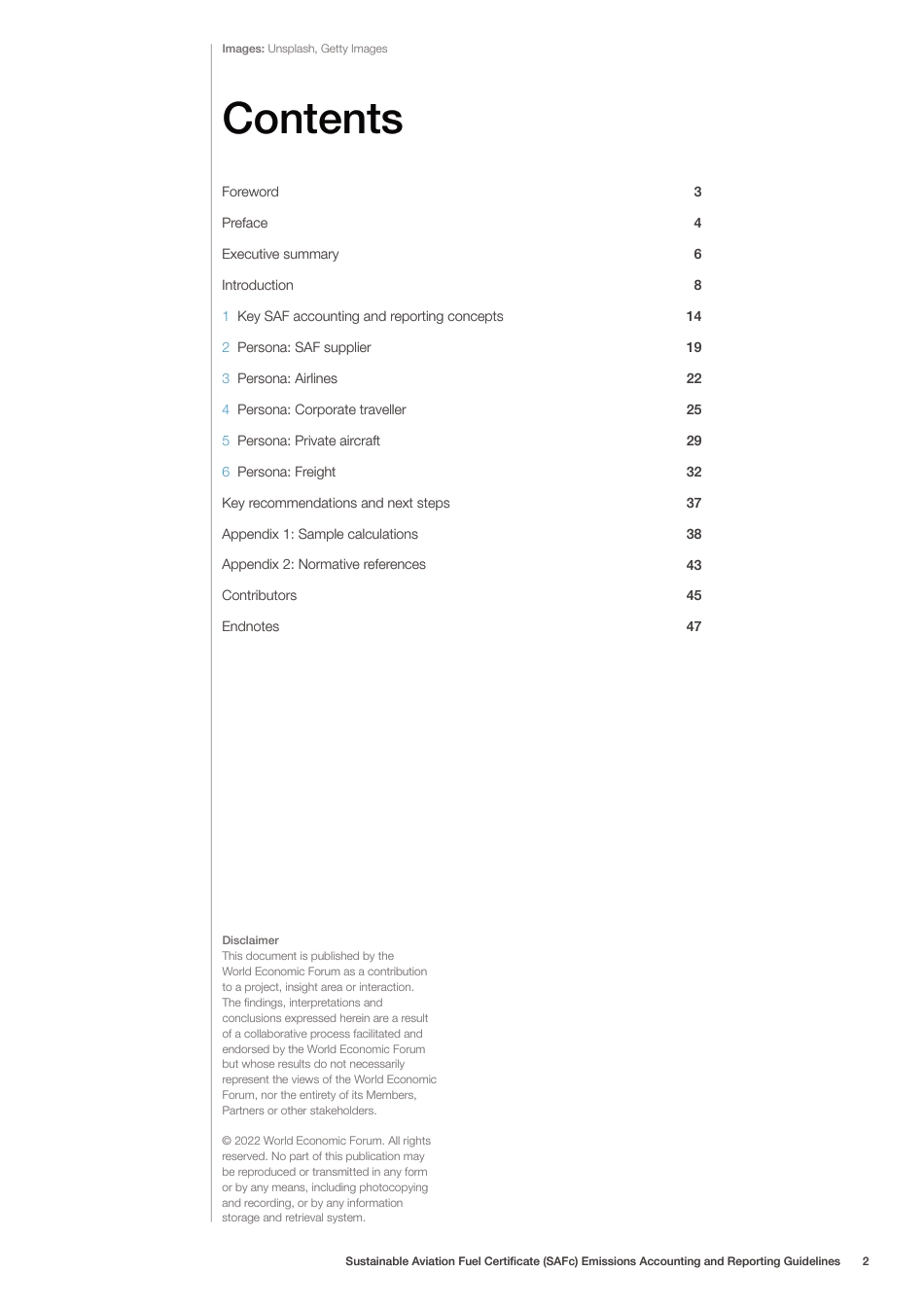Sustainable Aviation Fuel Certificate (SAFc) Emissions Accounting and Reporting GuidelinesW H I T E P A P E RO C T O B E R 2 0 2 2In collaboration with RMI and PwC NetherlandsContentsForewordPrefaceExecutive summaryIntroduction1 Key SAF accounting and reporting concepts2 Persona: SAF supplier3 Persona: Airlines4 Persona: Corporate traveller5 Persona: Private aircraft6 Persona: FreightKey recommendations and next stepsAppendix 1: Sample calculationsAppendix 2: Normative referencesContributorsEndnotes34681419222529323738434547Images: Unsplash, Getty Images© 2022 World Economic Forum. All rights reserved. No part of this publication may be reproduced or transmitted in any form or by any means, including photocopying and recording, or by any information storage and retrieval system.Disclaimer This document is published by the World Economic Forum as a contribution to a project, insight area or interaction. The findings, interpretations and conclusions expressed herein are a result of a collaborative process facilitated and endorsed by the World Economic Forum but whose results do not necessarily represent the views of the World Economic Forum, nor the entirety of its Members, Partners or other stakeholders.Sustainable Aviation Fuel Certificate (SAFc) Emissions Accounting and Reporting Guidelines2ForewordSustainable aviation fuel (SAF) is steadily making its way into the public consciousness of climate solutions. Some of the most influential companies and institutions globally have committed to procuring and using SAF at an ever-increasing scale over the past year. This is great news, as SAF is recognized as a critical lever toward making net-zero aviation a reality. From policy advancements, agreement on a long-term aspirational...



